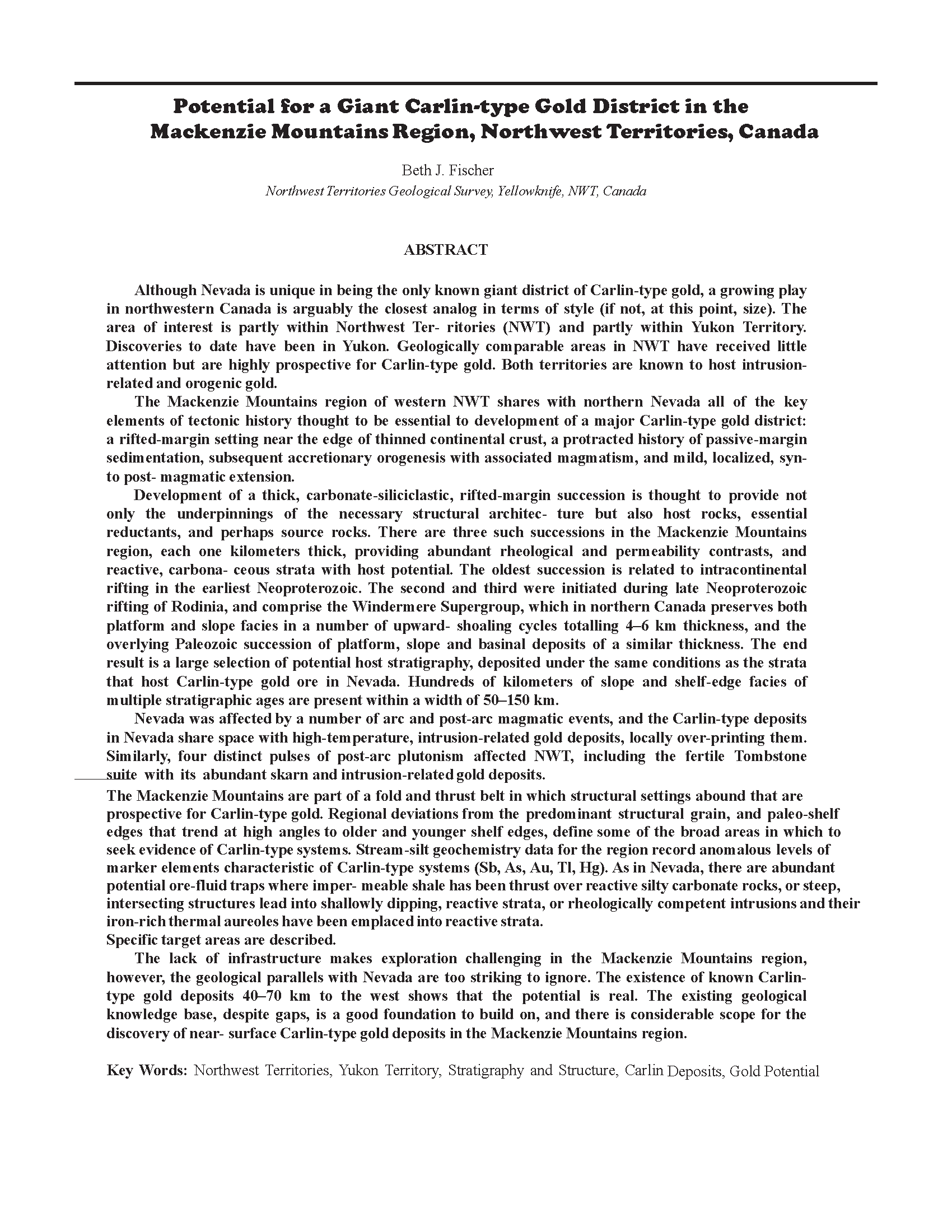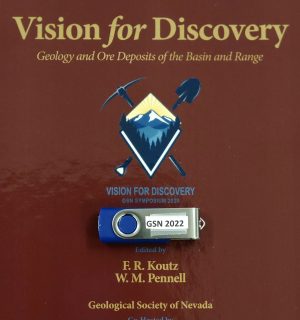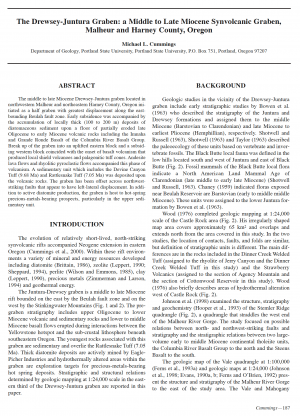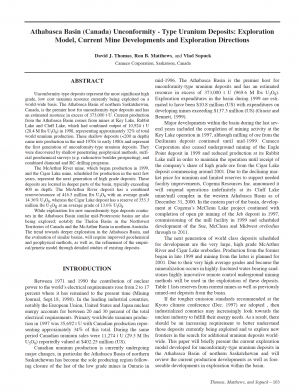Potential for a Giant Carlin-type Gold District in the Mackenzie Mountains Region, Northwest Territories, Canada
$10.00
Although Nevada is unique in being the only known giant district of Carlin-type
gold, a growing play in northwestern Canada is arguably the closest analog in terms
of style (if not, at this point, size). The area of interest is partly within Northwest Territories
(NWT) and partly within Yukon Territory. Discoveries to date have been in
Yukon. Geologically comparable areas in NWT have received little attention but are
highly prospective for Carlin-type gold. Both territories are known to host intrusionrelated
and orogenic gold.
The Mackenzie Mountains region of western NWT shares with northern Nevada
all of the key elements of tectonic history thought to be essential to development of
a major Carlin-type gold district: a rifted-margin setting near the edge of thinned
continental crust, a protracted history of passive-margin sedimentation, subsequent
accretionary orogenesis with associated magmatism, and mild, localized, syn-to postmagmatic
extension.
Development of a thick, carbonate-siliciclastic, rifted-margin succession is
thought to provide not only the underpinnings of the necessary structural architecture
but also host rocks, essential reductants, and perhaps source rocks. There are
three such successions in the Mackenzie Mountains region, each one kilometers thick,
providing abundant rheological and permeability contrasts, and reactive, carbonaceous
strata with host potential. The oldest succession is related to intracontinental
rifting in the earliest Neoproterozoic. The second and third were initiated during late
Neoproterozoic rifting of Rodinia, and comprise the Windermere Supergroup, which
in northern Canada preserves both platform and slope facies in a number of upwardshoaling
cycles totalling 4–6 km thickness, and the overlying Paleozoic succession of
platform, slope and basinal deposits of a similar thickness. The end result is a large
selection of potential host stratigraphy, deposited under the same conditions as the
strata that host Carlin-type gold ore in Nevada. Hundreds of kilometers of slope and
shelf-edge facies of multiple stratigraphic ages are present within a width of 50–150
km.
Nevada was affected by a number of arc and post-arc magmatic events, and the
Carlin-type deposits in Nevada share space with high-temperature, intrusion-related
gold deposits, locally over-printing them. Similarly, four distinct pulses of post-arc
plutonism affected NWT, including the fertile Tombstone suite with its abundant
skarn and intrusion-related gold deposits.
The Mackenzie Mountains are part of a fold and thrust belt in which structural
settings abound that are prospective for Carlin-type gold. Regional deviations from
the predominant structural grain, and paleo-shelf edges that trend at high angles
to older and younger shelf edges, define some of the broad areas in which to seek
evidence of Carlin-type systems. Stream-silt geochemistry data for the region record
anomalous levels of marker elements characteristic of Carlin-type systems (Sb, As,
Au, Tl, Hg). As in Nevada, there are abundant potential ore-fluid traps where impermeable
shale has been thrust over reactive silty carbonate rocks, or steep, intersecting
structures lead into shallowly dipping, reactive strata, or rheologically competent intrusions and their iron-rich thermal aureoles have been emplaced into reactive strata.
Specific target areas are described.
The lack of infrastructure makes exploration challenging in the Mackenzie
Mountains region, however, the geological parallels with Nevada are too striking to
ignore. The existence of known Carlin-type gold deposits 40–70 km to the west shows
that the potential is real. The existing geological knowledge base, despite gaps, is a
good foundation to build on, and there is considerable scope for the discovery of near surface Carlin-type gold deposits in the Mackenzie Mountains region.





